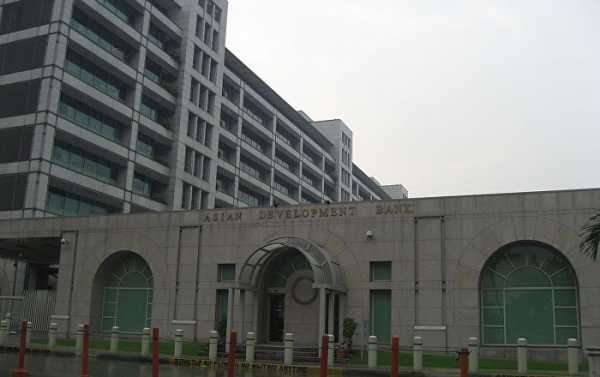
A top regional development lender in Asia says international trade tensions could hurt economic growth across the region, urging the US and China – as well as other countries – to settle their trade disputes through talks, and advance economic cooperation through trade deals.
Kristian Rouz — The Asian Development Bank (ADB) says the lingering trade spat between the US and Mainland China, as well as the side effects of slow trade negotiations between Washington and its trading partners across Asia, could hamper the economic growth prospects of several emerging markets.
According to a new report from the ADB, the expected disruptions in international trade could subtract an average of 0.1-0.3 percent from the GDP growth rates of developing countries across the Asian continent.
Analysts say spillovers of the US-China trade standoff, coupled with a projected downturn in volumes of global trade, as well as higher tariffs worldwide could affect the export of raw materials and manufactured goods from these countries.
“Downside risks to the outlook are intensifying”, ADB’s Yasuyuki Sawada said.
The ADB is headquartered in Manila, The Philippines — one of Asia’s most dynamic economies. The ADB said this year, developing Asian economies would maintain their growth momentum, expanding an average 6.0 percent.
But for 2019, the ADB cut its forecast to 5.8-percent annual expansion from the previously expected 5.9 percent.
Mainland China’s economy is expected to grow 6.6 percent this year, but slow to 6.3 percent in 2019. Most Chinese industries are still heavily reliant on the nation’s massive exports, while Beijing’s efforts to spur domestic consumption and advance structural reforms have been slow and produced insignificant results so far, the analysts noted.
This comes after US President Donald Trump slapped roughly $250 bln in imports with China with tariffs ranging between 10 and 25 percent earlier this year; Beijing responded with tariffs of its own, affecting some $60 bln worth of US goods.
However, ADB economists say this so-called ‘trade war’ could produce unlikely benefits for the rest of Asia. Analysts said US trade deficits with other Asian countries are unlikely to reduce next year, as many industrialized economies could substitute Chinese products with their own in the American market.
“Intraregional trade in Asia is as high as almost 50 percent of total trade and this seems to be increasing over time,” ADB’s Sawada said. “Asia used to be a global factory, and everyone viewed Asian economies as suppliers, but if we look, more than half of the global middle class lives in Asia.”
This is particularly relevant in light of the Trump administration’s efforts to strike bilateral trade agreements with several Asia-Pacific economies — as a replacement for the Trans-Pacific Partnership, from which Trump withdrew last year.
“It’s encouraging and very important to keep this momentum toward a more open trading system,” Sawada stressed.
However, international trade tensions have already produced some uncertainty across the Asian markets, as some well-established supply chains involve Mainland China and are now under the threat of lower profitability. A realignment in supply chains would require time, meaning overall Asian growth is poised to slow.
The ADB also pointed out that trade conflicts typically hinder business spending and investor confidence, and the US-Chinese spat is no exception. Additionally, some Asian economies are facing downside pressure on their national currencies — which, despite supporting their exports, might produce significant capital outflows, dampening GDP growth prospects as well.
Economists stressed that coherent effort to settle the existing trade disagreements could help reduce risks from a longer-term perspective. But China and the US have so far demonstrated little, if any, ability to negotiate a mutually-satisfying solution, despite the repeated calls for talks on both sides.
The ADB stressed that South Asia will be the only sub-region to accelerate into the next year, to 7.2 percent from 7.0 percent in 2018. But growth in Southeast Asia — where one of China’s main rivals, Vietnam, is situated, is poised to decelerate to 5.1 percent from the current 5.2-percent pace of expansion.
“Policymakers have at their disposal an array of tools with which to manage pockets of vulnerability and maintain stability, but they must be applied carefully,” ADB’s Sawada stressed.
Meanwhile, the ADB also observed inflation is set to remain at modest levels throughout Asia this year and next, averaging 2.8 percent — which is not too high, against the backdrop of the robust GDP growth across the region.
All this suggests the Asian middle class is expected to expand regardless of the trade disruptions, but lucrative trade agreements with the advanced economies could help reduce the risk, and ensure sustainable development in Asia for the years to come.
Sourse: sputniknews.com






